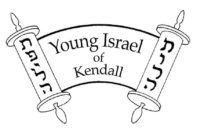123
What do you see when you look at a rose – the thorns or the flower?
There are two Hebrew words made of three letters that lend insight to answering the question:
Nega, spelled nun-gimmel-ayin and Oneg, spelled ayin-nun-gimmel. Nega means affliction, as in “Vayinaga Hashem es Pharaoh, Hashem afflicted Pharaoh,“ and regarding the plague of the Firstborn, “Od nega echad, another affliction will come.”[1] Oneg means joy, famously used regarding celebration as in Oneg Shabbos. A person was created to have Oneg of Hashem.[2] Nega and Oneg are opposites. Nega indicates the worst and Oneg the best.[3] [4]
Some people always see the dark side – in events and people. Others look around and see good. The different attitudes will be reflected not just in one’s disposition, it will be manifest in one’s speech. A person with a negative glance could be likely to express, K’nega nireh li, it appears to me that there is a malady here.[5] He will see faults in others and readily share his thoughts, thereby saying lashon hara.
The Torah describes what would happen when a person would say lashon hara. An affliction would appear on his home. If he mended his ways, the affliction would be removed. If he persisted the violation, an affliction would appear on his clothing. If he still did not get the message, the affliction would appear on his body.
In order to determine if what appeared was this affliction called tzaraas, an expert was called to make the evaluation. Who was the expert? It was a Kohein. What was it about this task that required a Kohein? “’Sifsei Kohein yishmeru da’as, the lips of the Kohein will safeguard knowledge.’[6] A Kohein will direct the afflicted person to do introspection and daven for himself. Additionally, the Kohein will daven for him as well.[7]
The Kohein was in position to inspire others. He would understand how to approach others effectively. Where did the Kohein get that ability? The Kohanim descend from Aharon HaKohein. It states, “Be from the students of Aharon. He loved peace and pursued peace.”[8] Typically, the person who would say lashon hara, would be a tzar ayin, someone narrow, limited in sight, limited in his caring for others.[9] Aharon was the opposite. He would be the right person to help someone open his eyes, mind, and heart.
It is noteworthy that nega and oneg have the same numerical value. Ayin=70. Nun=50.Gimmel=3. The total is 123. That number is relevant. Aharon HaKohein lived until 123. He provides the solution to form the right word and perspective.[10]
In the word oneg, the letter ayin, which means eye, is the first. In the word nega, the ayin is the last, representing that the person whose outlook is negative has a limited outlook, tzar ayin.
How can someone improve his vision? “Mi ha’ish hechafetz chaim, oheiv yamim liros tov, Who is the person who wants life, loves days to see good? Netzor leshoncha mayra…bakaysh shalom veradfeihu, hold your tongue from saying bad…seek peace and pursue it.”[11] Follow the lead of Aharon HaKohein, seek peace and pursue it. Withold your tongue from saying bad. That exercise of the tongue will help an individual maintain a positive outlook in his mind. Not only does a positive outlook lead to positive expression. It works both ways. Determination to desist from negative speech, allows for a positive outlook to surface and develop.
A person can make even greater strides when he goes to the next level – when he can express the good that he sees.
Do we find more of our statements to be negative or positive?
Shabbat Shalom,
Rabbi Hershel D. Becker
[1] Boh 11:1
[2] Rav Moshe Chaim Luzzato
[3] Zohar cited by Rav Menashe Yisrael Reisman
[4] Lech Lecha 12:17
[5] Metzora 14:35
[6] Malachi 2:7
[7] Seforno Tazria 13:5
[8] Pirkei Avos 1:12
[9] Yalkut Shimoni Lech Lecha 69
[10] Reb Chaim Kaufman of Gateshead cited by Rav Yitzchak Aryeh Epstein
[11] Tehillim 34:13-15
